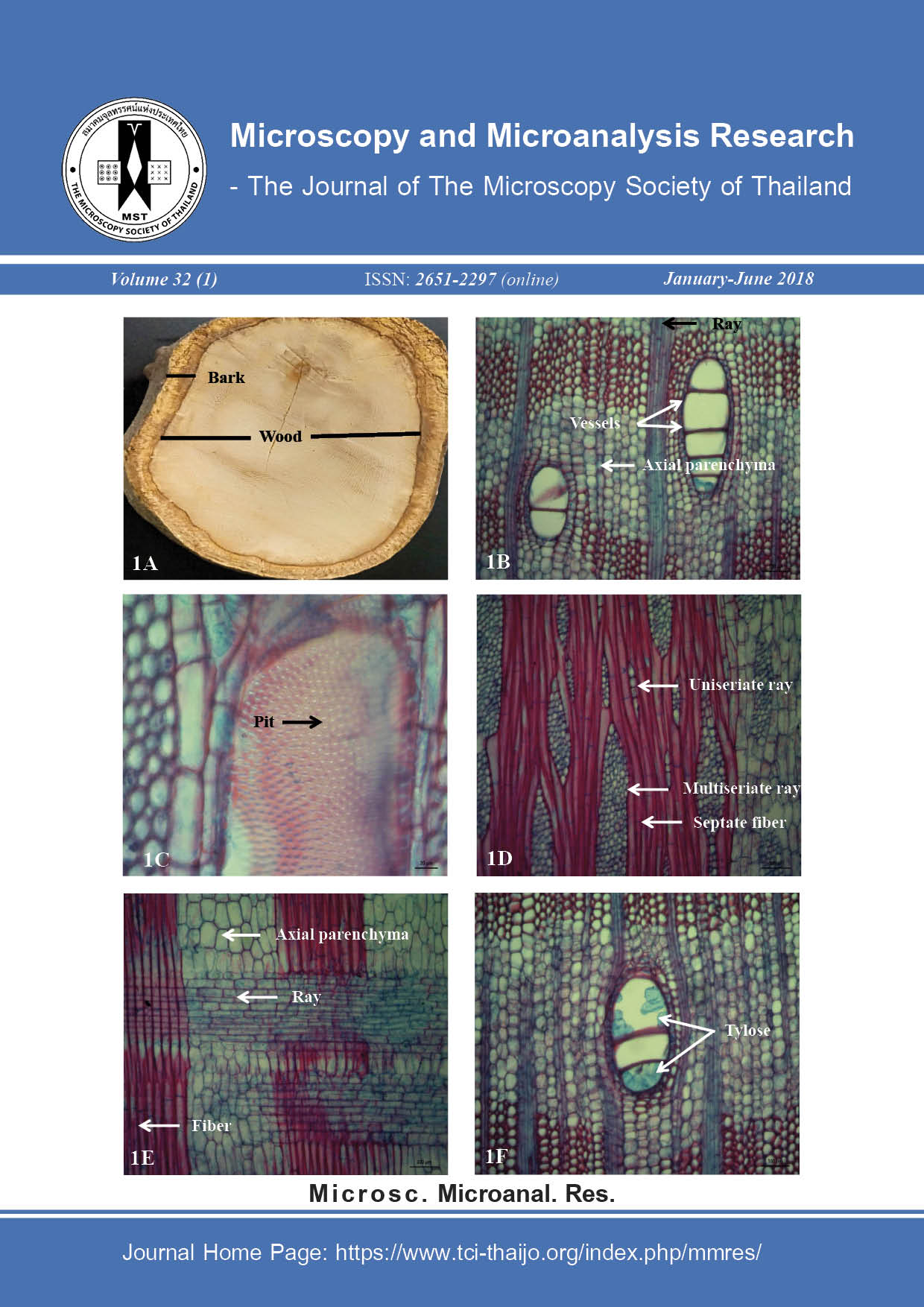Histopathology of Mekong Giant Catfish (Pangasianodon gigas) infected with columnaris bacteria in Chiang Mai province, Thailand
Main Article Content
Abstract
Mekong giant catfish (Pangasianodon gigas) is the largest herbivorous freshwater. This fish habits in the Mekong river area. Problems on the growth development and aquatic environment make the population of this fish decrease. Recently, the aquaculture of this fish was successful, thus raised this fish to economic fish for fishery production. However, a constraint in aquaculture is due to the infectious diseases. From the experiment of Mekong giant catfish in Chiang Mai province the high mortality of fish was taken out in cultured system. The present study, therefore, aimed to diagnose and demonstrate the causes of mortality and histology changes on moribund Mekong giant catfish. The moribund fish were observed the clinical signs, external parasite and histopathological changes by wet smear technique. The pathogen and histopathology of sections were examined and recorded by the trinocular compound microscope attached to the digital camera. The results showed creamy white or brown patches on the skin and fins of moribund fish with the high mortality rate (80%). Under the microscopic examination of skin, the hay stack of columnaris bacteria was found. Histopathology changes indicated epidermal ulceration, necrosis and severe dermal infiltration of neutrophils, numerous of culumnaris bacteria invasion, the gill hyperemia and oedema, degeneration of hepatocytes and hemorrhage in liver, necrotic degeneration and hemorrhage of spleen, hemorrhagic kidney degeneration. This study demonstrated that columnaris bacteria was the main pathogens for high mortality of Mekong giant catfish cultured in Chiang Mai province, Thailand.
Article Details
References
[2] E. J. Noga, Fish disease: Diagnostic and treatment, first ed., ,Wiley-Blackwell publisher, Iowa, 2010.
[3] A. M. Declercq, F. Haesebrouck, W. Van den Broeck, P. Bossier, A. Decostere, Columnaris disease in fish: a review with emphasis on bacterium-host interactions, Vet. Res., 2013, 44: 1-17.
[4] K. Thonguthai, S. Chinabut, T. Somsiri, P. Chanratchakool, S. Kanchanakhan, Diagnostic Procedures for Finfish Diseases. Department of Fisheries of Thailand, Bangkok, 1999.
[5] G. L. Humason, Animal Tissue Techniques. fourth ed., W. H. Freeman and Company, San Francisco, 1979.
[6] K. Meng-umphan, J. Saengkrachang, Production of generation-2 Mekong giant catfish (Pangasianodon gigas) cultured with Spirulina sp., Maejo Inter. J. Sci. Tech. l., 2008, 2(3): 559-567.
[7] C. Kunsete, Y. Kaewkhiaw, W. Sangarkhom, W. Maneepitaksanti, Fungi and parasite found from Anabas testudineus in Sansai district, Chiang Mai Province, Khon Kaen Agr. J., 2016, 44(2): 820-825.
[8] P. Katta, P. Sakda, C. Wongsawad, W. Maneepitaksanti. Survey of parasitic fauna from reservoir fish at Mae-Hia Subdistrict, Chiang Mai Province, Khon Kaen Agr. J., 2016, 44(2): 803-810.
[9] S. Tandavanitj, T., Somsiri, W. Maneepitaksanti, V. Panyawachira, J. Polchana, S. Kanchanakhan, T. Laoprasert. 2008. Prevention and treatment of fish disease. Inland Aquatic Animal Health Research Institute, Department of Fisheries, Bangkok, 2008.
[10] S. Tandavanitj, T. Somsiri, W. Maneepitaksanti, V. Panyawachira, J. Polchana, S. Kanchanakhan, T. Laoprasert, P. Baoprasertkul, B. Somridhivej, J. Bamrungkit.. Disease of Tilapia. Inland Aquatic Animal Health Research Institute, Department of Fisheries, Bangkok, 2008.
[11] S.E. Snieszko, G. L. Bullock. Columnaris disease of fishes. U.S. Fish Wildl. Serv., Fish Dis. Leafl. No. 45, Washington, DC., 1976, 10 p
[12] C. B. Tiwari, V. S. Pandey, Studies of hematology and histology in Labeo rohita infected with cutaneous columnaris disease. Rec. zool. Surv. India, 2014, 114, 151-157.


